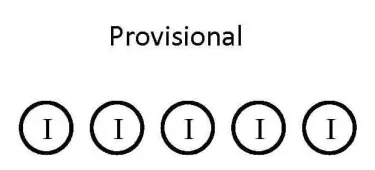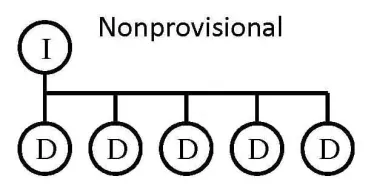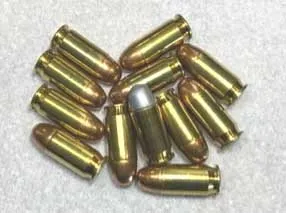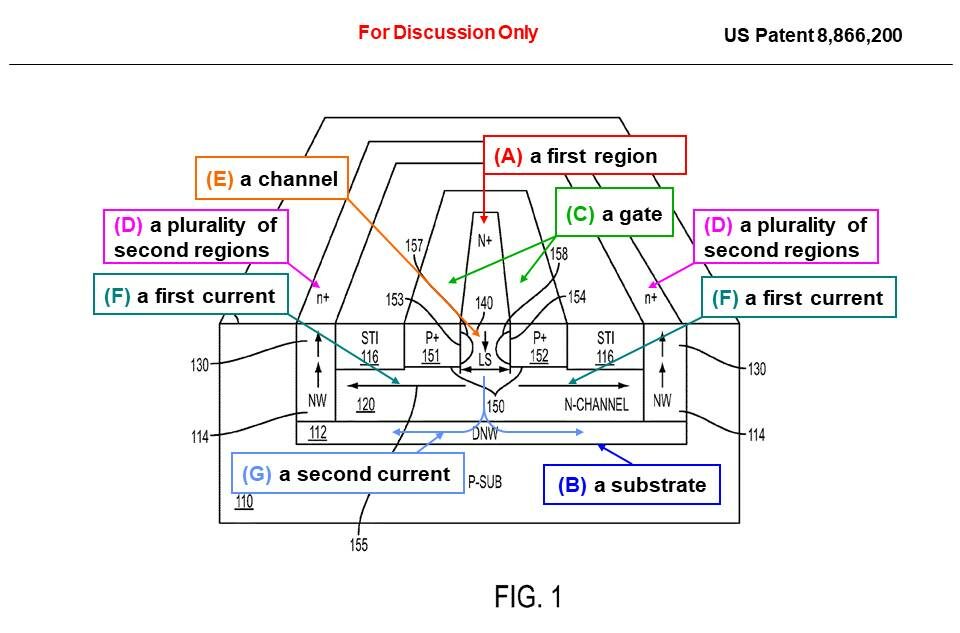Expert Patent Law Services
Patents
A patent for an invention grants a property right to the inventor issued by the United States Patent and Trademark Office. Generally, the term of a new patent is 20 years from the date on which the application for the patent was filed in the United States or, in exceptional cases, from the date an earlier related application was filed, subject to the payment of maintenance fees. U.S. patent grants are effective only within the United States, U.S. territories, and U.S. possessions. Under certain circumstances, patent term extensions or adjustments may be available.
The right conferred by the patent grant is, in the language of the statute and of the grant itself, “the right to exclude others from making, using, offering for sale, or selling” the invention in the United States or “importing” the invention into the United States. What is granted is not the right to make, use, offer for sale, sell, or import but the right to exclude others from making, using, offering for sale, selling, or importing the invention. Once a patent is issued, the patentee must enforce the patent without the aid of the USPTO.
Utility
Utility patents may be granted to anyone who invents or discovers any new and useful process, machine, article of manufacture, or composition of matter or any new and useful improvement thereof.
Two types of utility (and plant) patent applications are provisional and nonprovisional. A provisional application is a quick and inexpensive way for inventors to establish a U.S. filing date for their invention, which can be claimed in a later-filed nonprovisional application. A provisional application is automatically abandoned 12 months after its filing date and is not examined. An applicant who decides to file a provisional application must file a corresponding nonprovisional application during the 12-month pendency period to benefit from the earlier provisional application filing.
The priority date of the later-filed nonprovisional application, however, only applies to material disclosed in the provisional application. Material claimed in the nonprovisional application but not disclosed in the provisional application only has the benefit of the nonprovisional filing date. As a practical matter, the provisional application should provide all known details that may later be claimed in the nonprovisional application.
A patent examiner examines a nonprovisional application and may be issued as a patent if all the requirements for patentability are met. Each year the USPTO receives more than 600,000 patent applications. Most of the applications filed with the USPTO are nonprovisional applications for utility patents.
Design
Design patents may be granted to anyone who invents a new, original, and ornamental design for an article of manufacture.
A design consists of the visual ornamental characteristics embodied in, or applied to, an article of manufacture. Since a design is manifested in appearance, the subject matter of a design patent application may relate to the configuration or shape of an article, to the surface ornamentation applied to an article, or to the combination of configuration and surface ornamentation. A design for surface ornamentation is inseparable from the article to which it is used and cannot exist alone. It must be a definite pattern of surface ornamentation applied to an article of manufacture.
Patent law provides for the granting of design patents to any person who has invented a new, original, and ornamental design for an article of manufacture. A design patent protects only the article’s appearance, not its structural or utilitarian features.
Intellectual Property Attorney
When seeking patent protection, it is crucial to consult an experienced intellectual property attorney. They can guide you through the complexities of patent law and ensure your invention is adequately protected.
Patent Filing Services
Utilizing professional patent filing services can streamline the process of obtaining a patent. These services help with the preparation and submission of your patent application, ensuring all legal requirements are met and increasing the likelihood of approval.
Hire Patent Attorney
It is advisable to hire a patent attorney to protect your invention. An attorney specializing in patent law can provide expert advice and representation, from filing the application to enforcing your patent rights.
Patent quality is an elusive goal with many considerations.
“Patent quality is the capacity of a granted patent to meet (or exceed) the statutory standards of patentability–most importantly, to be novel (§102), nonobvious (§103), and to be clearly and sufficiently claimed and described (§112).” R. Polk Wagner, FTC, Understanding Patent Quality Mechanisms, 1/6/2009).
“What is a good patent? Patent quality is much discussed and frequently complained about, but not easily defined. . . The discussion is typically about validity, not the quality of the invention or its market value.” Bruce Berman, The puzzle that is patent quality, WIPO Magazine (4/20/2015).
“Patent quality exists in the eye of the beholder. Patent holders, courts, society-at-large, scholars, and other stakeholders in the patent system have different ideas about what makes a good patent.”, Kyle Highman et. al. Patent Quality: Towards a Systematic Framework for Analysis and Measurement, Research Policy Vol. 50, Issue 4 (2021).
Quality tabs under in this section provide a few considerations with some personal recommendations for improving patent quality.
USPTO
“The United States Patent and Trademark Office (USPTO) considers a quality patent to be one that is correctly issued in compliance with all the requirements of Title 35 as well as the relevant case law at the time of issuance.” USPTO
The USPTO, therefore, would consider patents with claims that included every limitation in the specification to be quality patents as long as they met all the requirements of Title 35 and relevant case law. In reality, they would only be expensive wallpaper.
This places the burden of patent application preparation, claim drafting, and prosecution squarely on the shoulders of the patent owner. The patent owner should remember that every word of a claim must be proved to show infringement. When unnecessary words are added they decrease the probability of infringement and provide increased opportunity for a potential licensee to design around the claims.
Idea
“In business, ideas spur creativity and innovation.” (1/18/2022) Kent Nutt
New ideas should be good by some objective standard when compared to previously known solutions. For example, new integrated circuits that improve speed, power, or layout area may be justified. Ideas that seem good when filed, however, may not seem good 3 years later.
A good solution is to objectively reevaluate patents prior to each maintenance fee due date. This approach avoids accumulating unneeded patents and rising maintenance fees.
Application
“If it’s not inspected it won’t be corrected.” US Army
A patent owner must inspect a sample of applications and their prosecution to assure quality.
The application must obviously satisfy all statutory requirements of Title 35. A patent examiner will usually assure compliance.
The best solution for claims is to capture the inventor’s original idea as well as any alternative designs that embody the inventor’s original idea to prevent design around alternatives.

Preferred provisional claim structure
A provisional application may provide a priority date for a later-filed nonprovisional application. However, this priority date only extends to the subject matter disclosed in the provisional application. Although claims are not required in the provisional application, it is best to include several independent claims (I) that might be used in the nonprovisional application to support the priority claim. There is no USPTO fee for independent claims in the provisional application.

Preferred nonprovisional claim structure
Independent claims (I) in the nonprovisional application should capture the greatest possible scope. Depending claims (D) should depend directly from their independent claim to preserve validity over unexpected prior art.
Examination
“A man’s got to know his own limitations.” Dirty Harry
Perhaps the most significant problem is the examiner’s prior art search. He will miss hidden prior art and may even miss the best publicly available prior art. Some examiners may simply continue their rejections even when presented with good arguments for allowance. That’s why many rejections are overturned on appeal. Remember, the examiners get credit for both rejections and allowances, and USPTO fees increase with RCEs and appeals.
A second problem concerns prosecution by an inexperienced patent agent or attorney. Due to inexperience with patent prosecution and perhaps relevant technology, he may be too willing to accept the examiner’s rejection and add unnecessary claim limitations to gain an allowance. This may defeat the intended purpose of any patent that may issue and produce expensive wallpaper.
The third problem concerns a patent agent or attorney who prefers quantity over quality. This problem may be growing with law firms hiring new patent agents and attorneys to work remotely without mentor or peer support.

Check Everything
The solution again falls to the patent owner to periodically and carefully inspect both patent prosecution and issued claims.
Validity
“The net result is 84% of patents that have been fully reviewed by the PTAB are found to be invalid. The USPTO data for FY20 indicates that a fraction of these patents would have some of the claims invalidated, while a majority of them would have all challenged claims invalidated.” Docket Navigator study (7/15/2022) Josh Malone

Body Count Licensing
“Body count” licensing relies on the number of patents in a portfolio and may not place sufficient emphasis on quality. Of course, this is more common with companies that have thousands of issued patents. But such companies typically have greater exposure to their opponents’ patent portfolio and, therefore, there is a need for high quality patents for both offense and defense.

Silver Bullet Licensing
“Silver bullet” licensing relies on finding one patent that might prevail in litigation. Finding such a patent is risky even for a non producing entity or patent troll, since it requires an initial investment to acquire the patent as well as legal fees and may be invalidated in litigation. The risk of “Silver bullet” licensing is even greater for a company that has some exposure to patents of a potential licensee.
“If anything’s gonna happen, it’ll happen out there.” Captain Ron
Although both “body count” and “silver bullet” methods of licensing have some merit, the best solution is an active licensing program. Searching a patent portfolio for claims that read on competitor devices keeps a patent owner knowledgeable of the strength of his own portfolio as well as what his competition is doing.
The following claim chart is not intended to show infringement but to show the necessary detail to prove infringement.


Fig 1 shows the elements of claims 13-15 on US Pub. 2014/0332858.
Claim charts such as this may be saved in digital form to document the value of issued patents. They will assist others in searching for competitor devices that may infringe.
